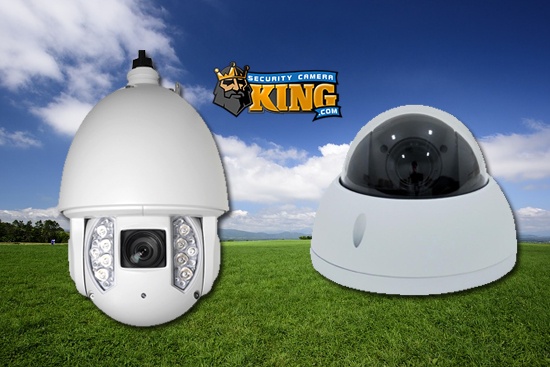How to Set Up a DVR
SCK is revisiting Coax technology today with our get-started guide on how to set up a DVR. Learn along with us today!
In this particular post, I’ll show you how to set up a DVR. You learnt that you recently purchased a new DVR, and I’m assuming you’re reading this post. Setting up a DVR is relatively simple, but we have some things to discuss first. For example, what is a DVR? What sorts of cameras can you use with a DVR, what other information do you need to get started today, what tools and requirements you must have, and more. We’ll go over everything in this post so that you can learn as much as possible.
DVRs, otherwise known as Digital Video Recorders, are security technology devices used to record surveillance and security footage in real time. DVRs are a key component in CCTV systems, which are closed-circuit television systems that record video in real time. Along with cameras and mounting equipment, DVRs are the centerpieces of CCTV systems and have been the dominant technology for recording footage since the beginning of time. DVRs primarily connect to COAX cameras via RG59 COAX cables to record footage digitally. In ancient times, footage was sent using an analogue signal. Because this is no longer the case, many people still refer to COAX cameras and DVRs as ‘analogue CCTV systems’ although this is not technically accurate.
Because DVRs are now connected to coax cameras by a digital signal, they can produce a lot higher resolution than before when using analog signals. Most DVRs today are hybrid systems that incorporate AHD, TVI, and CVI signals as well as CVBS. There are, however, a number of DVRs that utilize UIP or network cameras, although the number and channel selection may vary from one device to the next.
It is crucial to understand that setup and installation are not synonymous. Even though you may be able to handle the setup of your DVR after installation, the latter should be handled by a professional security technician. COAX cameras, COAX cables, power cables, distribution boxes, mounting brackets, power tools, and other hardware must be handled properly and safely in order to adequately and safely install CCTV equipment. To put it another way, drilling holes and creating pathways for wires, sealing these up to prevent weather problems, mounting and pointing cameras, powering and recording signals, and more must be performed during installation.
Before mounting the equipment, your security installer should test it to ensure that it functions properly and that every part is working. Here are some of the things that you need to think about when purchasing security cameras. We can help you with this or your contractor/installer.
There are a number of steps involved in setting up a DVR that has already been properly installed by a licensed security contractor or technician. From choosing the correct unit to navigating through the DVR’s menus to making sure that it suits your needs, setting up is the process of doing everything necessary to get the DVR up and running. You can set up the DVR to record at a particular time, for instance, as well as adjust the resolution and encoding settings.
During setup, your DVR will go through a wizard. The most important thing you can do here is set up your username, which is ‘admin’ by default and must be a minimum of eight characters. The password must be a minimum of eight characters and include both letters and numbers. You will also be asked to set up a pattern login, in which you may create a ‘connect the dots’ pattern to use instead of typing your password. We recommend keeping a record of your password somewhere secure so that you may use the pattern. You will need that password to perform many functions.
You’re finished entering your password! Just follow the setup wizard until the end to finish setting your date and time, and you can turn on DST if you like. You may also use this wizard to set motions and record schedules with it. Finally, if you haven’t already, you should take a look at the Encode Page under your main menu. Here, you will be able to set up all your cameras to the resolutions and bitrates you want!
Now that you have read through this article you should have a pretty solid idea of how to set up a DVR. If you’re interested in upgrading to a newer more advanced technology using IP cameras talk to one of our sales[ pros firs.tg You might be surprised to find that your coax system is actually doing a great job, you might find its a good time to upgrade, give us a call!
Related: What’s the difference between DVR and NVR?
Related: What’s the difference between H264 and H265?
Related: IP PTZ Security Cameras – All There is to Know












